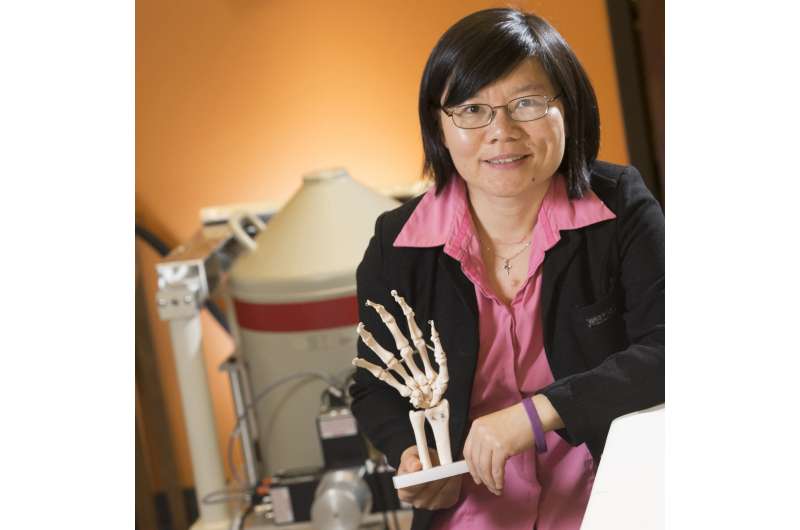Millions exposed to potentially dangerous metals, new technology could help lower the risk

A unique system developed by Purdue University researchers may help reduce the number of people impacted by health problems associated with the accumulation of metals in the body.
The technology detects manganese, a known neurotoxicant in high concentrations, which more than 1 million people in the United States are exposed to each year through their work in areas such as welding and construction, or during daily activities, such as eating food and drinking water.
Overexposure can lead to impaired cognitive and motor functions. At higher levels, it can result in a permanent neurological disorder with symptoms similar to Parkinson's disease.
"The accumulation of manganese or other metals in the body can have serious impacts on the brain, kidney, liver and other organs," said Linda Nie, an associate professor in Purdue's School of Health Sciences, who led the research team. "We want to use our technology to assess the exposure levels and to prevent progressive and permanent damage. This technology we have developed opens up a new door for metal exposure assessment and quantification and the research on metals and associated health effects on humans."
The Purdue metal detection technology is a neutron generator based activation analysis system that quantifies metals, such as manganese, in the bone in vivo. The neutrons interact with the metals in the bone and emit elemental specific gamma rays, which are collected and provide information about the exposure.
"Our novel, non-invasive technology is a giant leap for in-vivo metal quantification that may help improve the lives of thousands of people by identifying overexposure to toxic metals or insufficient intake of essential metals," Nie said. "Currently it is the only technology which can noninvasively assess long-term cumulative exposure to manganese and some other metals for an individual."
This technology uses a compact neutron generator, which reduces space and complications that come from larger devices, and makes it mobile and transportable. Researchers also are looking to use the same technology to quantify other metals such as aluminum, cadmium, sodium in bones and other targeted or storage tissues.
Nie said that the system could also be used to provide data to show the need for improved worker policies and water supply practices to limit exposure to metals.
Provided by Purdue University




















